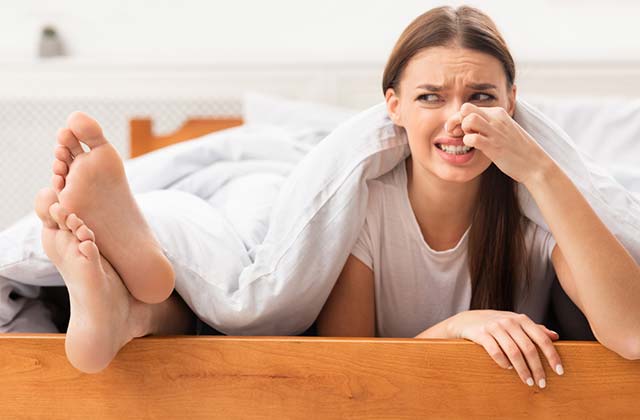7 Ways to Get Rid of Your Child’s Athletes Foot

As parents, you often observe if there are any changes in behavior or new mannerisms in your child. If your child comes home from school and you notice him or her incessantly scratching his or her feet, maybe it’s time to check if he or she has an athlete’s foot.
Tinea Pedis, more commonly called athlete’s foot, is a skin infection brought about by fungi. The fungus that causes this skin disorder consumes dead skin cells. Unfortunately, the human feet produce a lot of old skin cells which make them the body parts that are usually prone to this type of fungi.
Tinea pedis is popularly termed as athlete’s foot because athletes are the ones who typically get infected with skin diseases. One of the reasons athletes are more inclined to catch this is because the fungus strain causing the disease is usually found in areas where athletes spend their time in. This type of fungus dwells in damp and warm surfaces like in showers, pools, and locker rooms. Athletes are susceptible if they walk barefoot in these areas – and they usually do! The fungus can also thrive on towels that the athletes usually use to dry their feet.
Although athletes are more prone to this, anyone can get tinea pedis – including your child. Here are some symptoms of athlete’s foot that you can watch out for:
· Itchiness, continuous scratching of the feet;
· Redness and scaling on the soles;
· Elevated bumps on the feet;
· Rashes visible on the inside part of the feet;
· Smelly feet odor;
· Burning sensation of the affected area; and,
· If the child cannot stop scratching, raw skin surface
The bad news is that the fungi associated with this skin disease can spread to other parts of your child’s feet and other parts of his or her body. Before the condition worsens, you have to try these remedies to get rid of the child’s athlete’s foot problem:
1. Soak your child’s feet in a footbath solution.
Some people swear that mixing 1 teaspoon of bleach to half a gallon of water and soaking the feet in the solution for 10 minutes is effective. However, if you are concerned about the effects of bleach on your child’s skin, you can opt for less strong footbath concoctions. Instead of the bleach footbath, you can soak your child’s feet in a 70% rubbing alcohol and 30% water solution. Or, you can also dilute a mixture of vinegar and water as an alternative.
2. Bleach your child’s socks and towels and clean his or her shoes.
The fungus can thrive in shoes, towels, socks, and other clothing materials. If your child has an athlete’s foot, it is important to clean up his or her belongings, especially his or her socks and shoes. You can also use antifungal disinfectants like Pine-Sol to eliminate any fungus strain.
3. Air out your child’s feet and things.
Since the fungus lives in damp and warm areas, it is recommended to air out your child’s feet and often-used belongings. If your child needs to use socks, choose a pair that is made of breathable material. As much as possible, let your child use flip flops.
4. Use foot powder to avoid sweating.
If you want to keep your child’s feet from perspiring, use antifungal foot powders. A dusting of antifungal foot powder is crucial especially if your child needs to wear shoes.
5. Prevent your child from walking barefoot.
If your child is at school, make sure that he or she is wearing flip flops or shower shoes when at the public showers. Let him or her bring a personal towel for the body and feet to avoid using towels at school. Additionally, you should also give him or her own set of slippers at home to prevent the spread of the fungus.
6. Apply anti-fungal cream to the affected areas.
Get the help of a family doctor’s advice to treat your child’s athlete’s foot. The physician can prescribe an anti-fungal cream that you can apply to the affected area to prevent the spread and eliminate the fungi. Your doctor will also prescribe how often you should use the cream and for how long. If you cannot personally meet your family doctor at his or her clinic, an alternative is consulting an online doctor Toronto. Online doctors charge relatively cheaper consultation fees and they also provide digital prescriptions that you can use to buy the needed medicines for your child’s treatment.
7. Get the whole family treated.
Since the fungus can easily spread, it is recommended that you should also watch out for the symptoms of athlete’s foot in other family members who are in close contact with your child. If possible, disinfect your home and your family’s clothing and belongings, especially, socks, towels, and shoes. Coordinate with your family doctor or trusted online physician if you need to get the whole family treated.
Save yourself and your child from the unnecessary discomfort from athlete’s foot. Do these seven tips and if possible, contact a dermatologist immediately.
